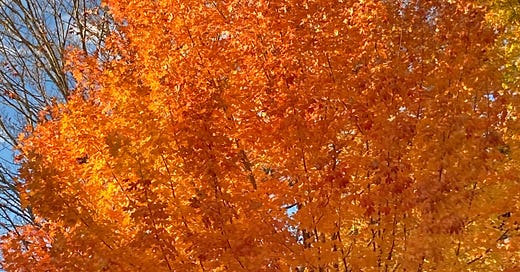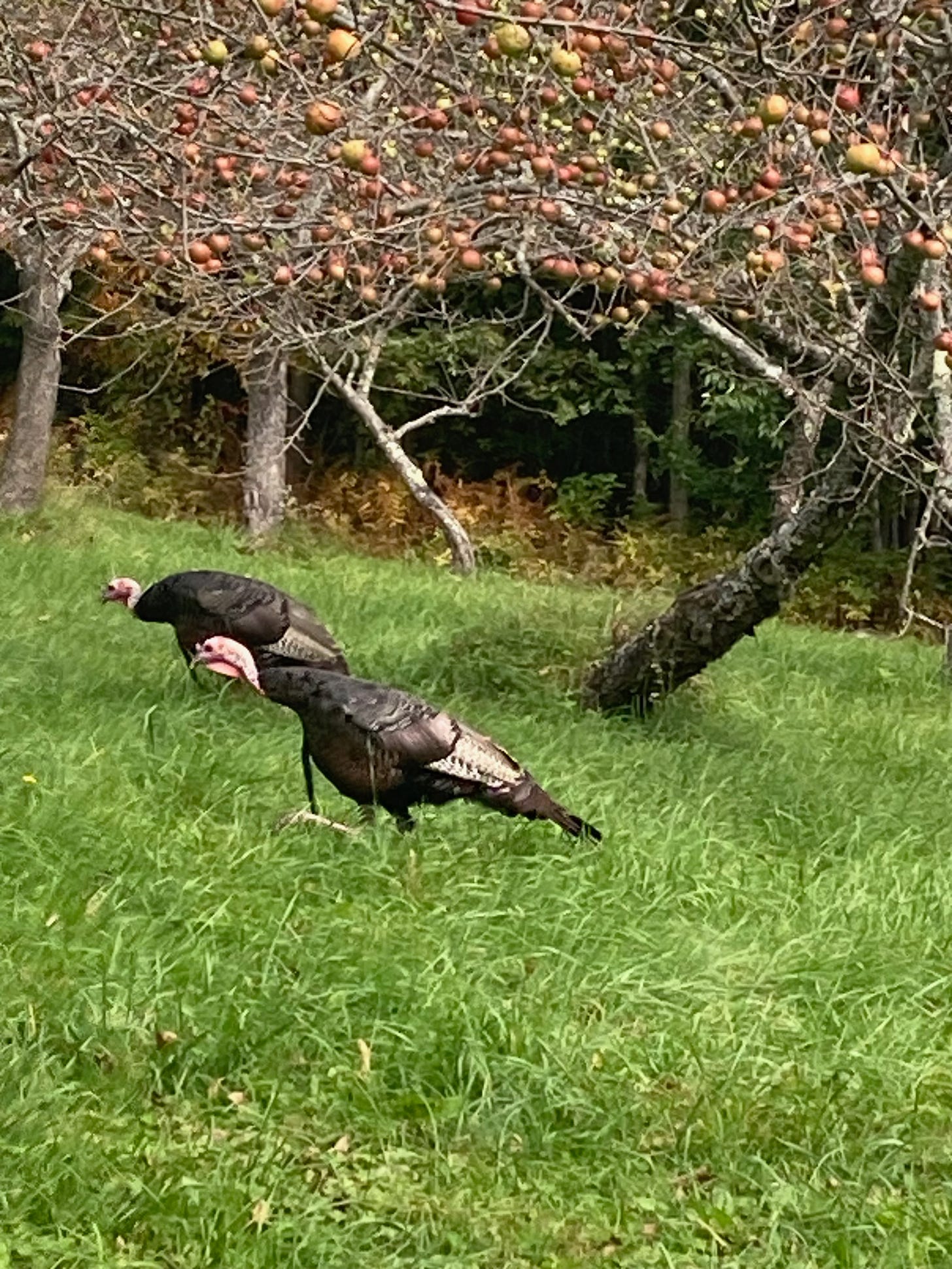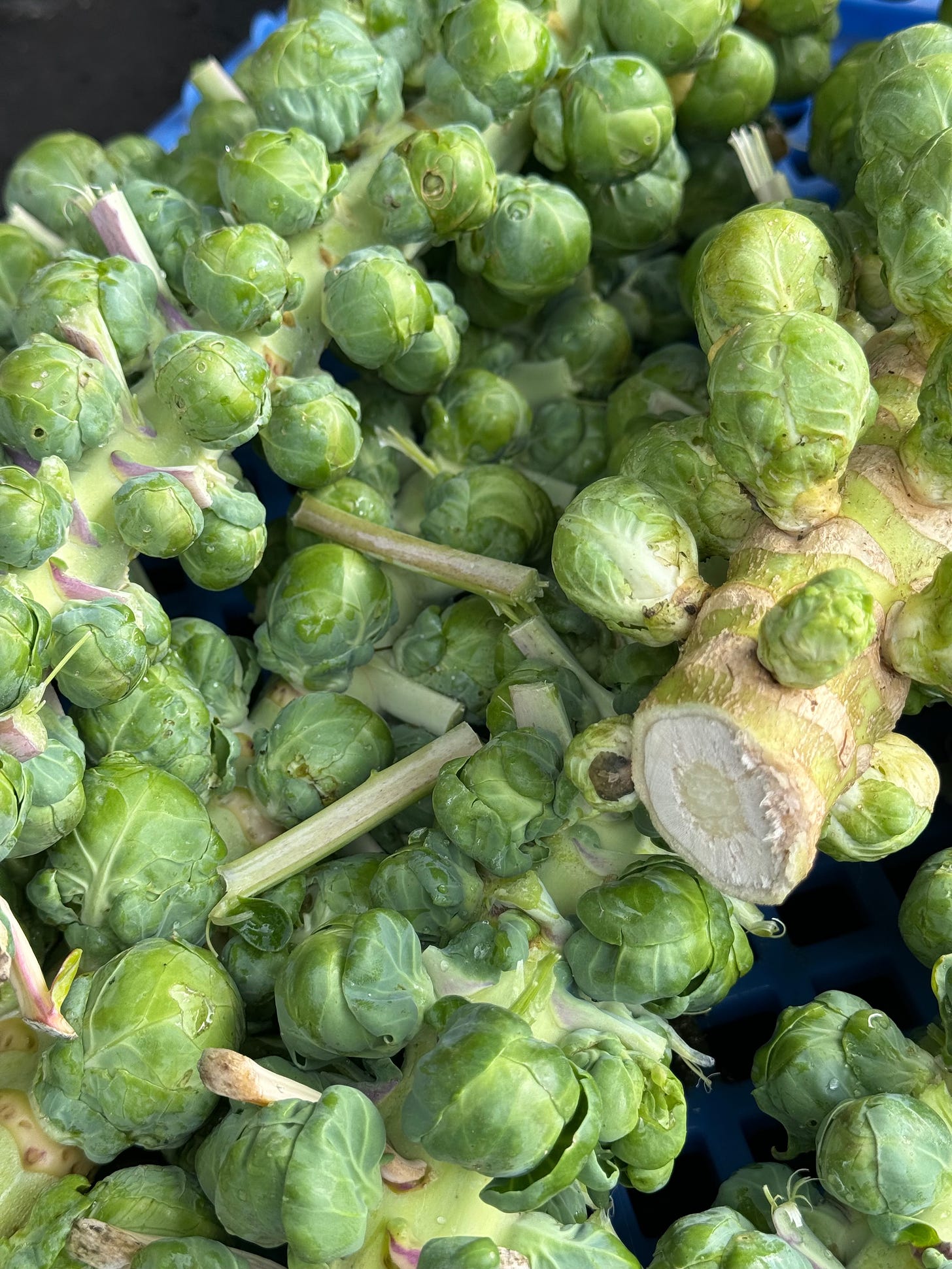Please just tap that little heart up there on the left. It means a lot to me.
I am away for the next few weeks on a writer’s retreat in the far northwest of Maine, right on the Appalachian Trail, at the southern edge of what’s called the Hundred Mile Wilderness. The season’s crop of through hikers are passing through the little town of Monson (population just over 600 in the last census), stopping for a rest, a clean-up, and a taste of something other than camp food, perhaps from Monson’s improbably, famously, and deservedly Beard-awarded restaurant The Quarry (most outstanding hospitality in the entire country, 2023). Many of these travelers started out back in April in Georgia; they’re reaching their destination and the last hundred miles of the famous trail in time to get home and vote in the upcoming elections.
If you’re a US citizen, I beg you to follow their lead and go out to vote:
Remember, remember, the 5th of November,
Gunpowder, treason and plot.
Most Americans won’t know what that refers to but Brits will be fully aware that on the 5th of November in the year 1605, Guy Fawkes and his Catholic co-conspirators tried but failed to blow up the Houses of Parliament and assassinate the Protestant King James I. Funny how religion can divide a country so deeply, isn’t it? Funny how what goes around comes around.
I think I’ll call that Food for Thought and I’ll chew on it for a while.
Autumn is unmistakably on us right now in Maine. With a sudden drop in temperature, the leafy brilliance of red and gold starts to flash from maples, and it feels like time to take down the screens, bring out the down comforters, check the wood pile, and generally make ready for the cold weather ahead.
But why do leaves change color? Most of us know the answer, but here’s the authoritative Old Farmers Almanac weighing in:
Those vivid leaf colors were actually hidden underneath the green all along! As sunlight decreases and cold increases, tree growth slows, and the production of green chlorophyll in their leaves begins to slow, revealing fall leaves’ brilliant yellow, orange, and red. . . .The combination of reduced light, lack of nutrients, and less water triggers the trees to start the process of breaking down the chlorophyll, and the green color fades.Okay, that’s the explanation, but here’s my question: Why does this only happen in some parts of the world (northern New England, for instance) and not in others? I’ve spent many a fall in Italy and seldom seen the kind of brilliance that is just normal and ordinary—if startling and gratifying—in Maine. How come?
Autumn is really a fancy term for the season that in North America with a kind of Puritan plainness, we call fall. Why? Think falling leaves in their dazzling colors, falling fruits dropping from the trees, acorns and chestnuts, quinces and apples; think too of the fall of the year itself, declining gently but inevitably into winter. The rest of the English-speaking world calls it autumn, a word, I discovered to my delight, that may have roots in ancient Etruscan. Whatever it’s called elsewhere, I like calling it fall—it tells us precisely what it is.
In old English times, the three-month “fall” from summer to winter was called simply Harvest, as it still is in German: Herbst. And harvest is what it’s about—harvesting the late ripening fruits of the garden, farmyard, and orchard, putting it all carefully by to sustain us in the depths of the cold that we know lies ahead, including wood for the fires and hay for the animals. It’s a time of gathering in the kitchen too. Our tables are still rich, but the fare is notably plainer, with the flavors of winter squash and pumpkins, leeks and root vegetables, turnips and potatoes. In Tuscany, farmhouse rafters are hung with braids of onions and garlic and garlands of dried chili peppers to spike winter beans and legumes, while the hillsides echo with the cries of hunters, the barking of their dogs, the bugle call when a wild boar is shot.
Back in Maine, I prowl farmstands and markets for wild mushrooms, and if not for wild boar then for satisfyingly fatty meats, pork and duck especially. I’m searching for pumpkins to carve for Hallowe’en and others, especially rouge vif d’Etampes or Long Island cheese pumpkins, both of which are not easy to find but treasured when I come across them. Less sweet and tastier than ordinary pumpkins, these are great for pies but also to chop and brown with sharp garlic sausage in a pan, for a pasta dish that reflects the available ingredients at the same time that it satisfies an innate appetite for richer, more warming food as daylight hours shorten and frost hovers in the night air.
At this point, the kitchen seems naturally to turn away from summery basil in favor of more resinous flavors of sage and rosemary; it’s also a major time for all those brassicas that are now in season—cauliflower, broccoli and broccolini and broccoli rabe (sometimes called rapini), Brussels sprouts, cabbage of course, and all the kales, including my favorite lacinato or Tuscan kale. There’s a handy recipe for pasta with Brussels sprouts that may turn any cabbage-hater into a lover. (“Please, could we have that pasta you make with Brussels sprouts for supper tonight?”)
And of course you can’t say anything about autumn, my poet friend Peggy says, without quoting Keats. So here it goes, once again:
Season of mists and mellow fruitfulness,
Close bosom-friend of the maturing sun;
Conspiring with him how to load and bless
With fruit the vines that round the thatch-eaves run;
To bend with apples the moss'd cottage-trees,
And fill all fruit with ripeness to the core. . . .
It’s one of the most beautiful poems in the English language, I truly believe, written by a man who was barely 20 years old, too young for such wisdom. Autumn celebrates his genius, just as he himself celebrated the magnificent gift of this season: Ripeness to the core.
Of course, the greatest series of fall holidays are those around the Jewish New Year. The celebrations are late this year, Rosh Hashanah not arriving until the evening of October 2nd. But keep in mind that, like all holidays, it will be here before you know it. Maybe it’s not too soon to start thinking now about what you’re going to serve, about a table heaped with abundance, about legacy traditions like apples dipped in honey, pomegranates and dates for sweetness, and round braided challah loaves to symbolize the circle of the year.
Beyond family traditions, however, if you’re stumped for inspiration and want to try something new, you should turn to The Jewish Holiday Table, Naama Shefi’s collection for the Jewish Food Society, with an amazing, inspirational range of recipes from all over the Jewish world. You could, for instance, try Rottem Lieberson’s Khoresh e Beh, a lamb stew coupled with quinces and dried apricots, from her family’s origins in Teheran; or how about tomato pilau, basmati rice cooked with the last of the seasonal tomatoes and garden dill, turmeric and bay leaves, from Max Nye’s Indian-Jewish-London ancestry; or perhaps Jessica Solnicki’s Pkaila, a spinach, beef, and bean stew brought from Tunisia to Brazil by way of Paris; or maybe Mitchell Davis’s more familiar kasha varnishkes or his gefilte fish (yes, the whole thing, from mixing the freshwater fish to shaping and poaching it in a savory stock before chilling it for serving). “Holiday meals,” Davis says of his Toronto childhood, “were our religion. They were how we were Jewish, the ritual that made us feel different.”
NB: You can find more great food from Mitchell Davis, and not just Rosh Hashanah dishes, on his Substack page: Kitchensense.substack.com.
The Jewish Holiday Table goes on, feast after feast, with the last meal before the Yom Kippur fast (try Kathy Berry’s array of salads from her Marrakech childhood--she set out on her own for Canada at the age of 17), then Sukkot, Hanukkah, Purim, Passover, the whole magical round of food that marks the Jewish year from start to finish. And then start all over again.
And you don’t have to be Jewish to love this book. Drawing on traditions from all over the expansive Jewish world—the subcontinent, Australia, Bokhara (Central Asia), Italy, Mexico, Iraq, wherever Jews, Ashkenazi, Mizrahi, Sephardi, have settled, if only momentarily, in a long, long history. The book is richness in and of itself—and of course it would make a wonderful gift to take to a Rosh Hashanah feast too.
Recipes below for Olive Salad with Pomegranate from The Jewish Holiday Table, and Pennette with Brussels Sprouts and Pancetta, and Pasta with Sausage, Sage, and Winter Squash, both from The Four Seasons of Pasta, the book I wrote with my chef daughter Sara Jenkins.
Keep reading with a 7-day free trial
Subscribe to On the Kitchen Porch to keep reading this post and get 7 days of free access to the full post archives.








